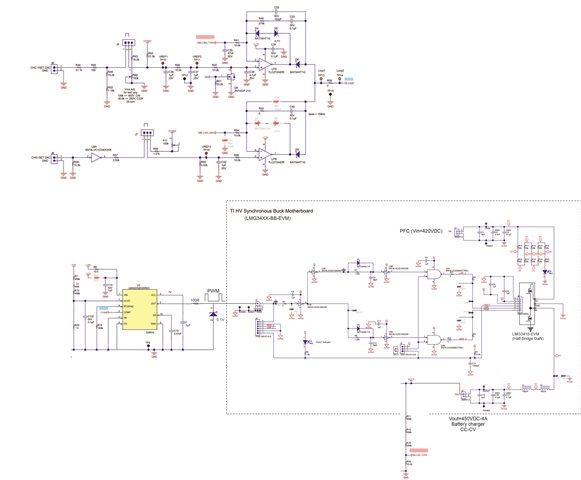Other Parts Discussed in Thread: LMG34XX-BB-EVM, LM5022, PMP22339, LM3524D
Good morning all,
I am making a synchronous buck to make a CC-CV charger with an LMG34XX-BB-EVM evaluation board to test GaN modules from TI.
This board just needs a PWM input, this PWM is then reconditioned through the development board in order to correctly drive the 2 GaN transistors mounted in half-bridge, the one at the top of the bridge is the main switch of the Buck, the one bottom is used in freewheel.
To carry out the PWM control, I use an LM5022 (which I have on hand and given the current shortage of components...) which I divert from its initial function which is for Boost and Sepic use.
It works correctly and I get the desired result (Vin=200VDC -> Vout=150VDC), at least without load for the moment.
Here is my question:
I am working on closed loop control, for this I will do the feedback on the COMP pin (having set FB to GND) and I have opted for type II compensation.
I cannot find in the datasheet the amplitude of the sawtooth (Vosc) to fill in my equation for determining Rcomp.
Could you advise me on this?
If you had a concrete example of closed loop design with the LM5022, I'm interested, because in the datasheet it's really explained in a horrible way...
Thanks in advance.


